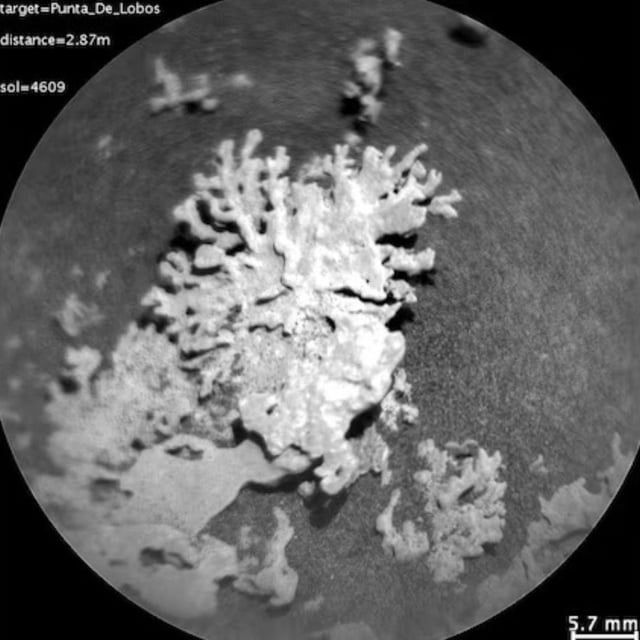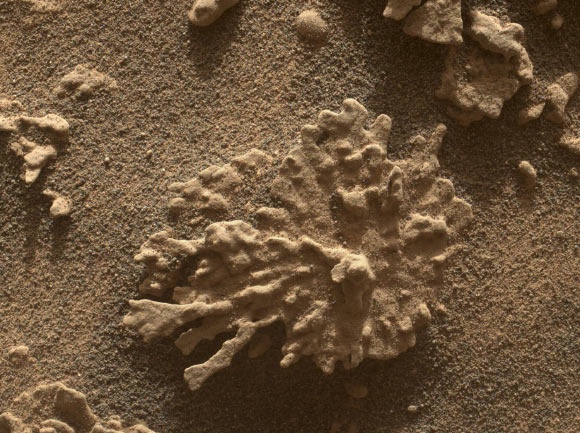Overview
- On Sol 4609 (July 24, 2025), Curiosity’s ChemCam Remote Micro-Imager photographed a roughly one-inch-wide, coral-like rock formation in Gale Crater.
- NASA scientists interpret the branched shape as a mineral pseudofossil formed when groundwater deposited dissolved minerals into rock fractures billions of years ago.
- Subsequent wind erosion removed surrounding softer material, leaving the resistant mineral veins exposed as intricate, branch-like structures.
- This discovery follows earlier observations of flower-shaped rocks and boxwork ridges, reinforcing a pattern of recurring aqueous features that point to sustained past water activity on Mars.
- Curiosity remains active in Gale Crater, using drilling and chemical analyses to further constrain the mineral composition and timing of these ancient water-driven processes.

